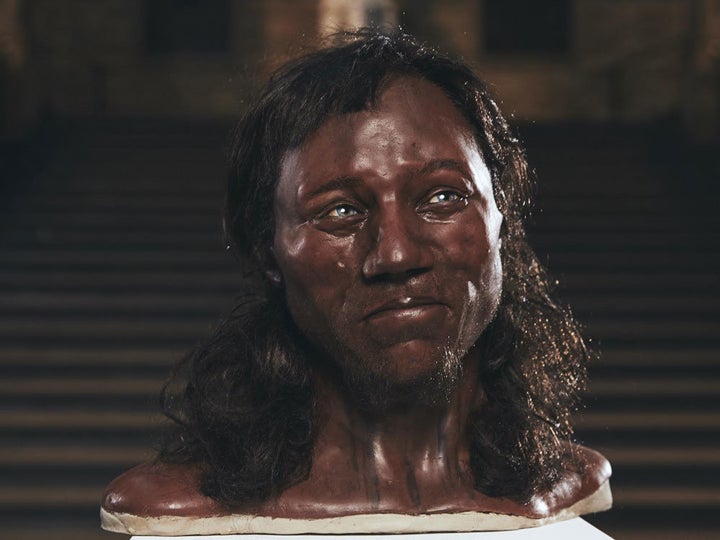Scientists long believed that “Cheddar Man,” Britain’s oldest complete skeleton, was fair-haired and light-skinned. But according to new DNA analysis of his remains, he — and at least some of the first modern settlers of Britain — had dark skin and dark, curly hair.
“It really shows us that these imaginary racial categories that we have are really very modern constructions, or very recent constructions, that really are not applicable to the past at all,” Tom Booth, an archaeologist at London’s Natural History Museum who was involved in the analysis, told The Guardian this week of the Cheddar Man findings.

Cheddar Man’s 10,000-year-old skeleton was discovered near the village of Cheddar in Somerset, England, in 1903. Researchers now say he was part of a group of hunter-gatherer immigrants from continental Europe who’d settled in Britain shortly after the last ice age. Today’s white Britons are descendants of that immigrant population — one that, until recently, had been assumed to be fair-skinned.
But, by sequencing Cheddar Man’s entire genome and reconstructing his face using cutting-edge techniques, scientists at the Natural History Museum and University College London have proved the assumption wrong.
“Cheddar Man had blue eyes, dark colored curly hair and ‘dark to black’ skin pigmentation. Previously, many had assumed that he had reduced skin pigmentation,” the researchers said in a news release Wednesday.
“The discovery suggests that the lighter pigmentation now considered to be a defining feature of northern Europe is a far more recent phenomenon,” they added.
The researchers, who extracted bone powder from Cheddar Man’s ancient skull to conduct the DNA analysis, said their study offers insights into the origins of the Stone Age man. His ancestors, they said, left Africa and moved to the Middle East before heading to Europe and, finally, Britain.
About 10 percent of white Britons today can trace their ancestry to this ancient population, the researchers noted.
Scientists involved in the research said they weren’t entirely surprised by the findings.
“It might surprise the public, but not ancient DNA geneticists,” Mark Thomas, a University College London scientist, told National Geographic.
Other recent genetic research, Thomas explained, shows that Europeans from Spain, Hungary and Luxembourg who lived during the same era as Cheddar Man also were dark-skinned.
Questions remain, however, as to when and why Britons started to develop lighter skin. Some experts have suggested that ancient humans in more temperate regions were exposed to less sunlight, and therefore evolved to have lighter skin, which absorbs more ultraviolet radiation ― necessary for the production of vitamin D.
“In my view, that’s the most robust theory for skin pigmentation,” Thomas told National Geographic. “But it doesn’t explain eye pigmentation. There are other processes that go on. It could be sexual selection. It could even be something else we don’t yet understand.”
